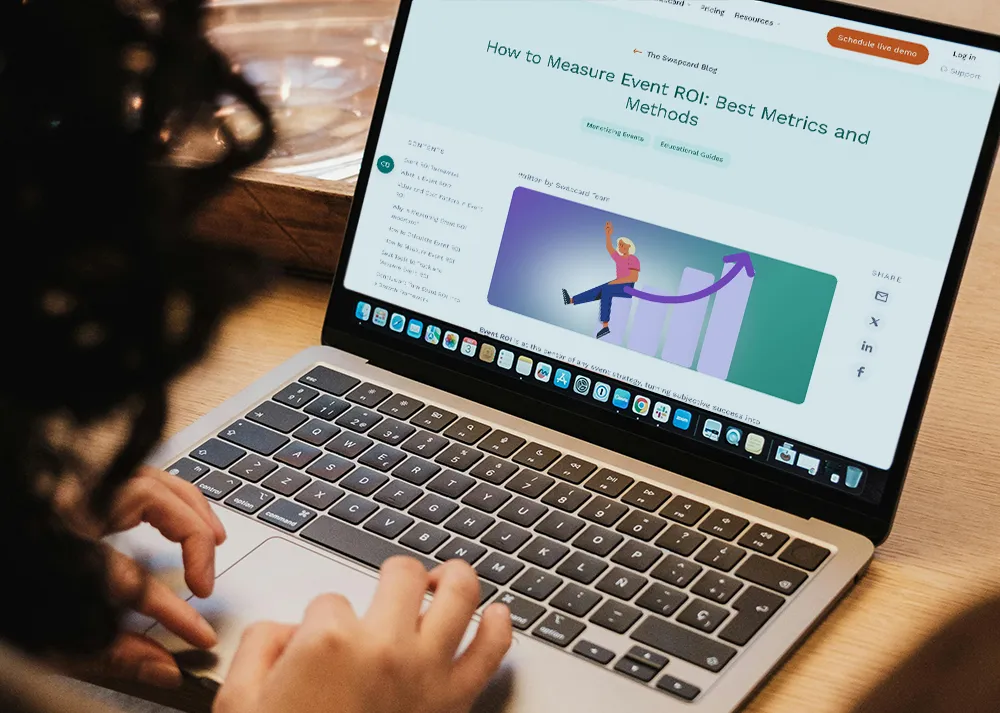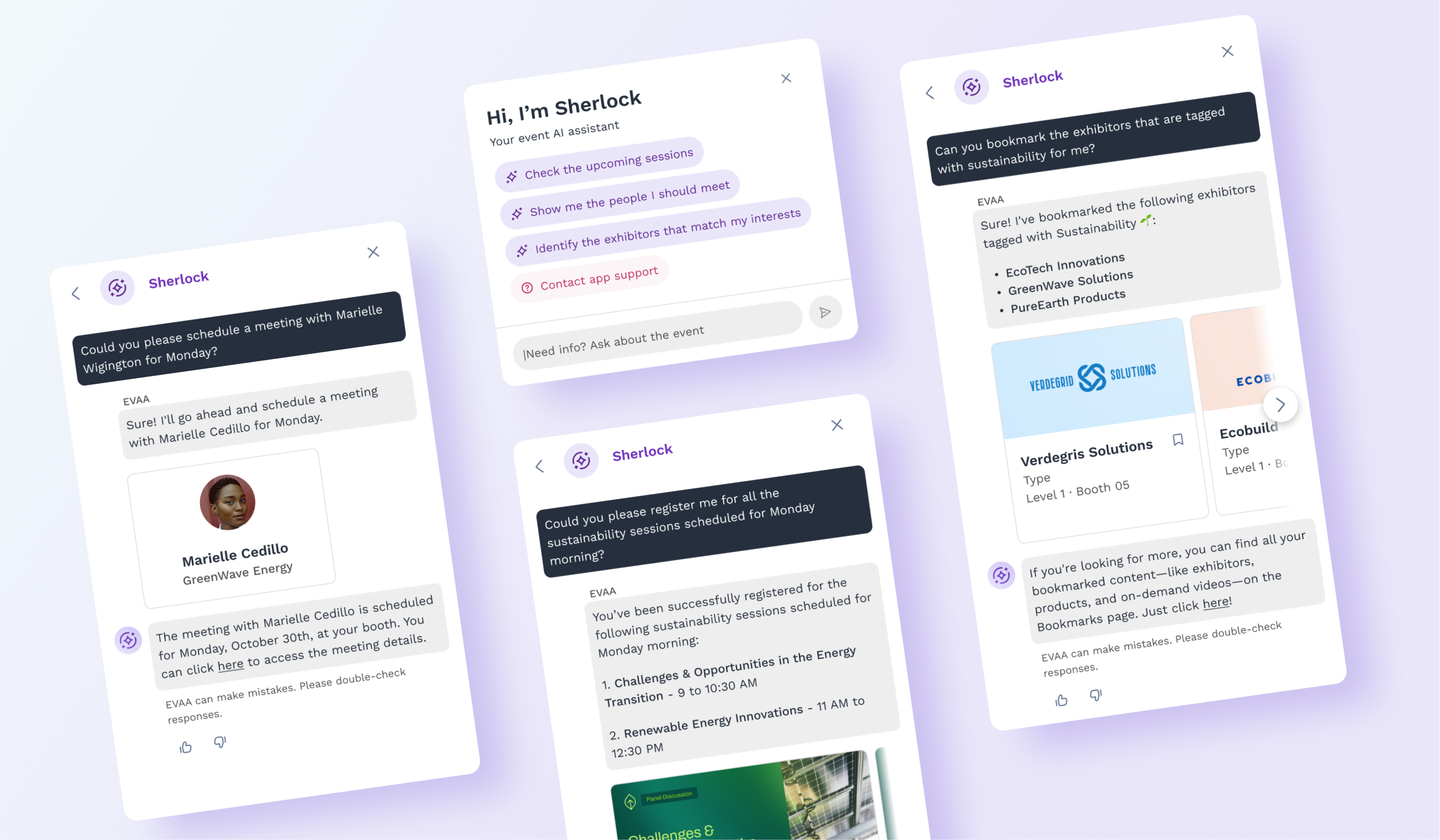How to Boost Engagement at Your Conference
Attendee engagement is critical for building meaningful relationships, boosting brand visibility, and driving business results at your trade show, exhibition, or conference. High engagement levels translate to more leads for your exhibitors, increased ROI, and a memorable event experience for all participants.
Here are some key insights from a recent conversation between event leader, Katie Minaret, and marketing maverick, Jay Lebo, that will help you keep your attendees engaged at every stage of the event cycle.

The Evolution of Engagement Metrics
In the past, event organizers primarily focused on the number of attendees and basic feedback forms when looking at engagement. The goal was simply to gather as many people as possible, without much regard for their experience or how engaged they were during the event.
However, over time, the landscape has changed. Gone are the days of simply counting attendees. Organizers now need to know not just who attended but also how they interacted with the event, which sessions they found valuable, and how they networked with other participants.
This shift has been driven primarily by heightened expectations for ROI. Organizers are under more pressure from stakeholders like exhibitors, sponsors, and investors to show a clear return on investment, making engagement metrics essential for proving event value.
"Our understanding of engagement is evolving, and it's changed so significantly, especially over the past few years. We've gone from barely benefiting from event data to needing metrics that link to business goals. " - Katie
How to Build an Effective Engagement Strategy at Your Conference
Engaging attendees at your trade show, exhibition and conference requires careful planning, taking into account the various factors to ensure maximum participation and satisfaction.
From composing compelling pre-event communications to implementing real-time engagement tactics during the event and following up with post-event activities, every step plays a crucial role in shaping the attendee experience.
An engagement strategy maps out core strategies that enhance attendee engagement. Below are four core components you need in yours.
1. Start early, build Buzz
Start by contacting potential attendees well in advance. Use targeted questions during registration to gather valuable data, helping to create a personalized attendee experience that boosts engagement.
Next, craft a series of pre-event communications to keep attendees informed and excited. Share sneak peeks, highlight key sessions, and introduce speakers and exhibitors to generate anticipation. Build anticipation through a structured communication plan, utilizing emails, social media, and other channels to create buzz. Release information in stages to keep your audience hooked.
"I always urge our organizers to think about communication and engagement in parallel to their registration. It needs to be done right at the beginning, and time needs to be spent on it. Data shows that mapped-out engagement and communication strategies yield results.” - Katie
2. Promote platform proficiency
The use of an event platform is key to maximizing attendee engagement and exhibitor ROI, however, most organizers and exhibitors are still not making the most of it.
To help your team and exhibitors become proficient in using the event platform, offer pre-event training. You can offer these well in advance — Katie recommends a few months before the event — but also record them and provide written documentation so everyone can familiarize themselves with the platform's functionalities and features at a convenient time.
“We really urge organizers to invest time in training. if they know how to leverage [the platform], it is going to increase the return on investment for them.” - Katie
3. Use real-time data to make on-the-fly adjustments
Engagement peaks during the event, but it’s not the time to relax. Thanks to modern tech, it’s now possible to leverage data as it comes in to make informed decisions that keep attendees engaged.
A hot topic, for example, is geofencing or geolocation (also known as wayfinding technology) to see the flow of visitors as they're moving through your event and then reacting to that data e.g. prompting exhibitors to host another live demo or workshop to catch the attention of the incoming crowd.
You can also use real-time data to see if your exhibitors are making use of things like badge scanning for lead generation. And if they're not, have your team onsite visit their booths to see how you can support them.
"Seeing the flow of visitors and reacting to that data is crucial. Time really needs to be scheduled during those on-site event days. They [exhibitors and organizers] need to be monitoring the data, they need to be reacting to it" says Katie.
.avif)
4. Aim for 365 engagement
Post-event engagement has a tendency to be neglected, but it is actually an excellent opportunity to foster more engagement and grow your community.
Leveraging your event community for year-long engagement (or 365 engagement) can have a tangible positive impact on your event objectives. It’s as simple as sharing session summaries, and content with your community after the event doors close.
When it comes to content, the more personalized, the better! Don’t hesitate to use attendee data from registration or the onsite event to tailor content to your attendee’s interest and sector.
“[Organizers] can even filter who they target depending on if they attended the session or didn't, or if it was a topic that they registered as an interest in their registration form or not”. - Katie
Use your community to share networking opportunities (both virtual and in-person), and to encourage further interaction with exhibitors products and services in the virtual exhibition space.
"Keeping the audience engaged beyond the event cultivates a community and lays the groundwork for future events." - Katie
How one B2B conference planned for engagement across the event lifecycle
Want to know the strategies a leading medical conference put in place to nail their engagement strategy? Keep reading!

Before the event
- Content and communications: Attendees received tailored messages based on their interests and registration data, ensuring relevance and higher engagement rates. The content was released in phases to maintain a steady stream of anticipation, featuring sneak peeks, key session highlights, and speaker introductions.
- Registration process: The registration process was designed to collect key information from attendees, enabling personalized experiences and targeted engagement strategies.
- Extensive event promotion: The event was widely promoted across all social media channels, with conference staff including the event website or platform links in their email signatures to maximize visibility and reach.
- Comprehensive training: A dedicated team to train exhibitors so they are able to effectively leverage event tools to increase their engagement and ROI.
During the event
- Event platform communications: All event communications came from the event platform, ensuring higher platform engagement rates.
- Event platform promotion: Organizers placed QR codes leading to the event app anywhere and everywhere - from the Metro exits to the venue lobby to staff members' t-shirts. They really made use of every opportunity to promote the event app. And we know there’s a strong correlation between event app activation and engagement.
- On-site support team: The on-site support team engaged with exhibitors to make sure they had everything they needed to drive attendee engagement and to help them analyze incoming data in real time.
After the event
- Ongoing networking opportunities: The event organizers facilitated continued networking by creating opportunities for attendees to connect and collaborate even after the event doors closed.
- Content: Detailed summaries of key sessions were shared with attendees, tailored to their interests and areas of focus. These summaries included highlights, actionable takeaways, and additional resources, ensuring that attendees could continue to benefit from the event content even after it had concluded.
- Post-event data analysis: Event organizers provided comprehensive support to exhibitors in analyzing post-event data. This included personalized consultations to help exhibitors understand attendee behavior, feedback, and engagement metrics, enabling them to refine their strategies and maximize their ROI for future events.
Final Thoughts
“Engagement in itself is such a huge component of event success, but having an engagement strategy is what organizers need to do in order to reach those goals that they're being set by external stakeholders.” - Katie
Building a successful engagement strategy requires time, planning, and the right tools. At Swapcard, we offer a user-friendly event engagement platform for large B2B trade shows, exhibitions, and conferences looking to modernize and future-proof their event. The result? Revenue growth, enhanced attendee engagement, and more exhibitor ROI.
Join 12,000 subscribers and unlock industry secrets.
By submitting this form, you agree to receive periodic emails on insightful content related to events and our product, and in accordance with our Privacy Policy. You can, of course, change your preferences or unsubscribe at any time.







.svg)


.svg)
.svg)
.svg)





